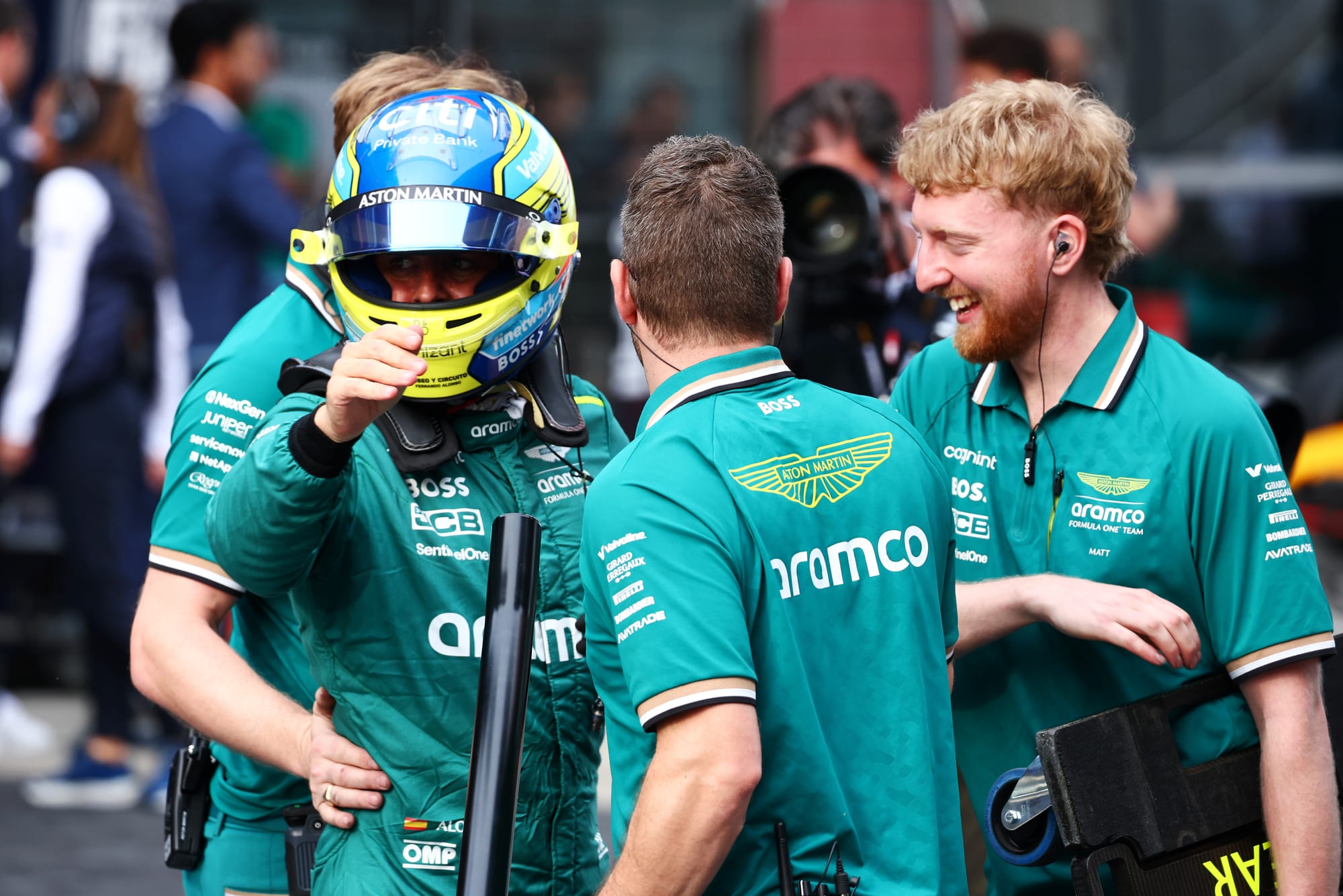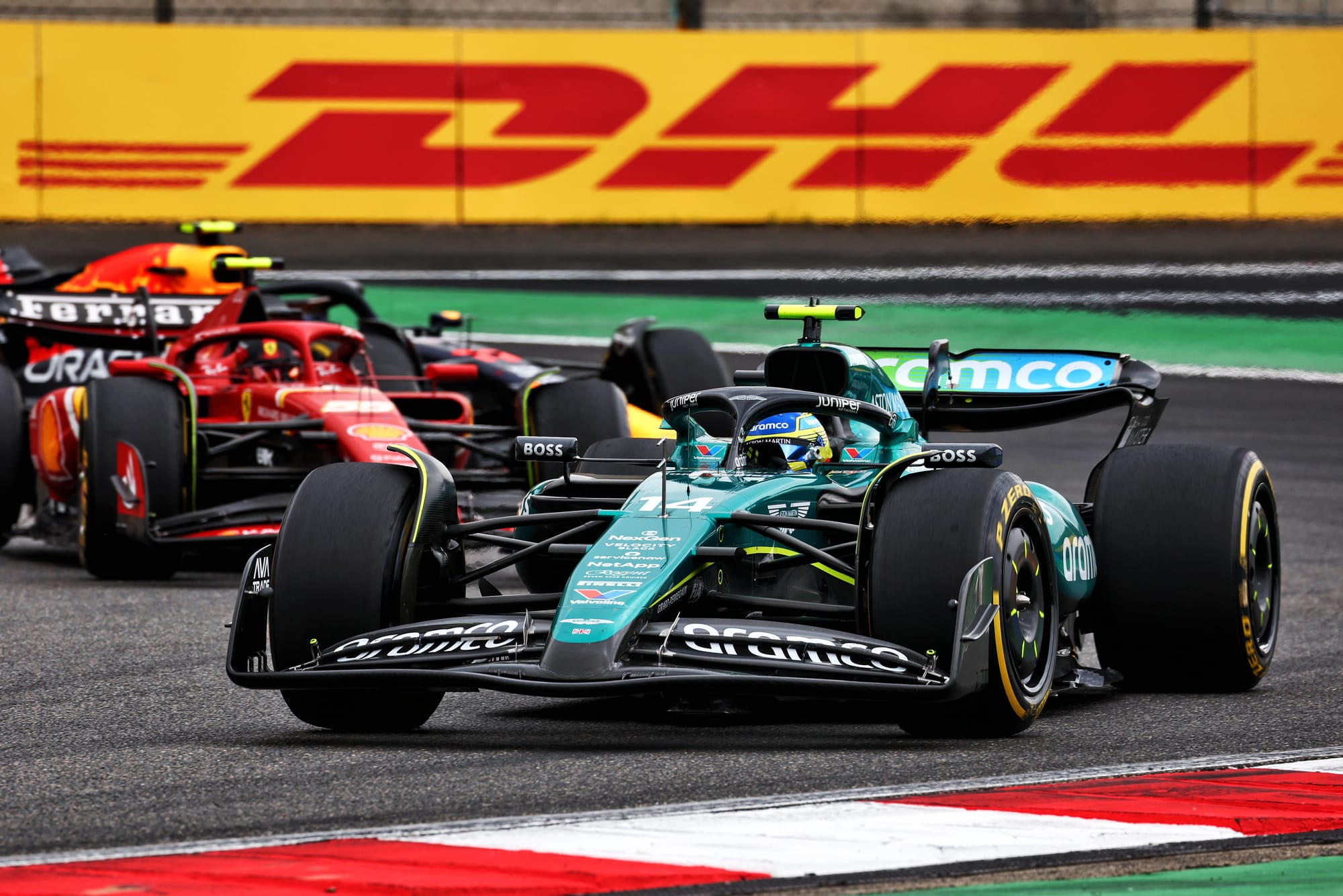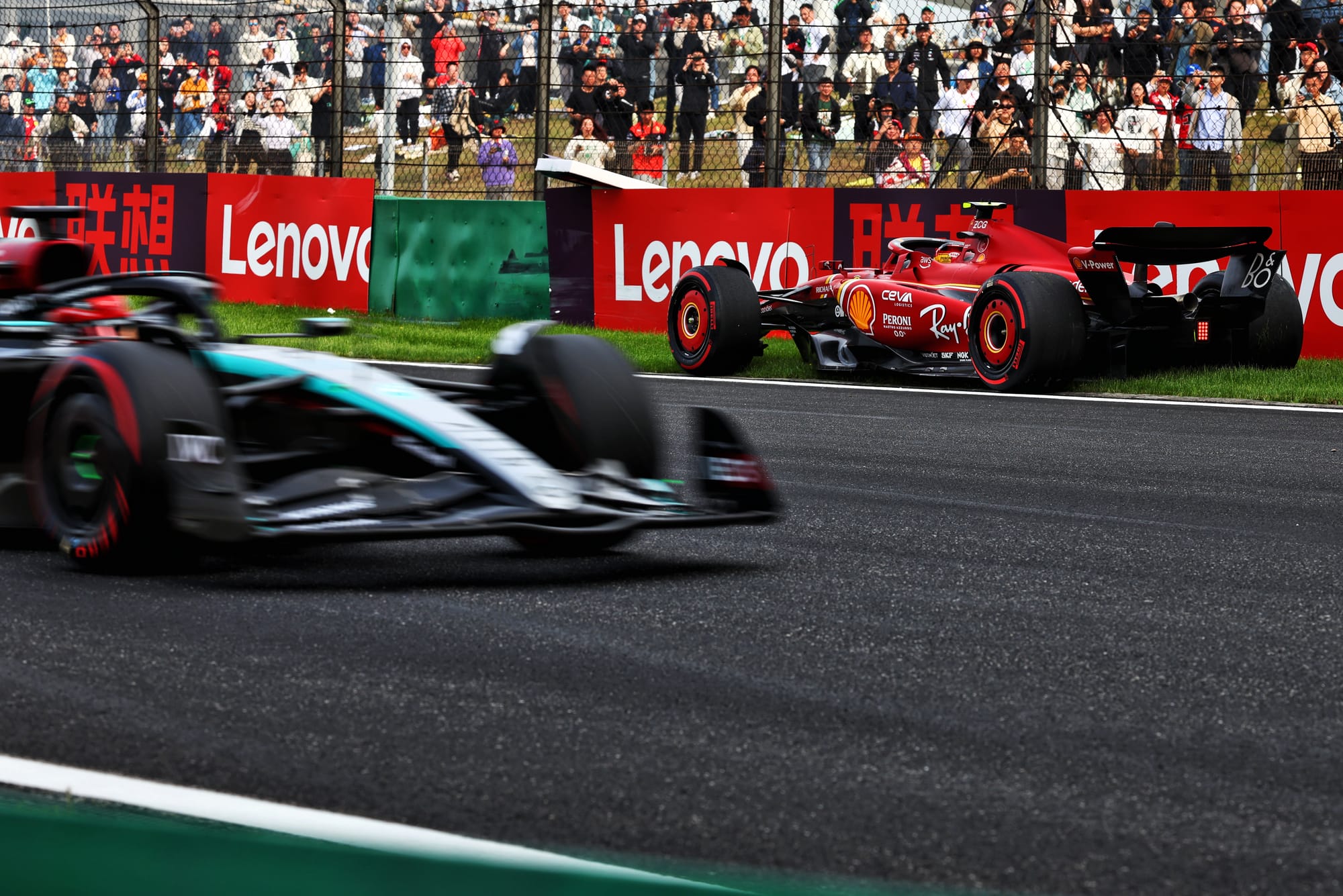Fernando Alonso’s penalty in Formula 1’s sprint race at the Chinese Grand Prix, which left him halfway to a race ban, was for breaching new racing guidelines he called “crucial” at the start of 2024.
Alonso was hit with a 10-second time penalty after the Shanghai sprint for an incident with Carlos Sainz towards the end of the Saturday morning race.
A multi-corner battle ended with Alonso attempting to repass Sainz into the slow Turn 9 left hander that follows the sweeping Esses in the middle of the lap and hitting the Ferrari.
Alonso regained the place as Sainz went off-track but both were passed by Red Bull’s Sergio Perez, before Alonso quickly lost ground and had to pit at the end of the lap with a puncture.
After the sprint race the stewards deemed Alonso caused the collision and said “per the guidelines on driving standards” the infringement required a baseline 10-second penalty.
The stewards’ decision does not state exactly what Alonso did wrong beyond “causing a collision”.
But breaking down the guidelines at least hints at the answer.
PUNISHED BY RULES HE ADVOCATED

The guidelines were updated for 2024 having first been introduced two years ago following concerns about the consistency of decision-making and drivers not knowing what was allowed.
That was a less formal document though, whereas in February this year the FIA Drivers’ Committee, Circuit Commission and Safety Department had worked together to create the first official ‘Driving Standards Guidelines’ which will apply to all categories of circuit racing with the intention of being a consistent reference for drivers and officials.
Two-time world champion Alonso was even quoted in that announcement as advocating the project because “we need consistency in how drivers attack and defend on the race track, as well as how the rules are interpreted during all competitions” - and said the guidelines “will be crucial”.
They include specific guidance for different overtaking moves and different situations. For overtaking on the inside of a corner, as Alonso was trying to do against Sainz, a driver must be given room if they satisfy the following conditions:
1. Have their front axle AT LEAST ALONGSIDE of the mirror of the other car no later than the apex of the corner
2. Be driven in a safe and controlled manner throughout the manoeuvre (entry, apex and exit)
3. Without (deliberately) forcing the other car off the track at the exit, which includes leaving a fair and acceptable width for the car being overtaken from the apex to the exit of the corner
4. Be able to make the corner within the track limits
Alonso was fully behind Sainz at the start of the move into Turn 9 but by braking later and diving inside, he did have his front axle at least alongside Sainz’s mirror before the apex.
Though they made contact, Alonso’s car was not wildly out of control, although his entry speed and trajectory at the apex was clearly a factor in the collision at the apex. Alonso did make the corner within the track limits.
Either the stewards felt Alonso was out of control, because he came from too far back and was taking too much speed in order to be far enough alongside Sainz at the apex, or he has been deemed to have forced Sainz off through contact.
While defining whether it was done “deliberately” is arguably impossible, the guidelines do state that includes “leaving a fair and acceptable width for the car being overtaken from the apex to the exit of the corner”.
Sainz had to leave the track mid-corner and even if the initial contact had not forced him wide, Alonso’s trajectory suggests there would not have been a car’s width for him to stay on track anyway.
The stewards clearly felt this was enough to go beyond a racing incident and contravene the racing rules.
Alonso's 10-second penalty also came with three points on his licence - the second time in three events he has had that, after his controversial Australia incident with George Russell, leaving him halfway to the automatic ban triggered when a driver reaches 12 licence penalty points.
WHY THIS PENALTY?

The fact this merited a penalty is partly due to the tendency to apportion blame in clashes rather than rule them as racing incidents.
While it may be assumed that Sainz losing a place and continuing with a damaged car would justify the penalty, it is frequently argued by officials that decisions are made without factoring in the consequences.
Alonso does not agree with the decision to penalise him but says he accepts it. He may feel hard done by that his clash with Sainz merited punishment but Sainz’s own incident with team-mate Charles Leclerc soon after did not.
Sainz went deep into the hairpin defending from Leclerc at the end of the lap, causing minor contact and pushing Leclerc off the track.
Both continued, and Leclerc passed Sainz a few corners later anyway, but this type of incident between team-mates tends to get handled more leniently.
As for Alonso, one minor quirk was an apparent discussion over what kind of penalty he should receive.
As was revealed earlier this year, and mentioned in the report for this incident, it has been agreed for 2024 that the baseline penalty is 10 seconds instead of five because of complaints last year that five seconds was not enough of a punishment or a deterrent.
So once the stewards deemed he had caused a collision the 10-second penalty is indeed required. However, the fact Alonso finished the race in the pits did complicate the matter slightly.
The rules state that a time penalty imposed after the end of a sprint or grand prix will be added to the time of the driver concerned, but if a driver retires then it can be turned into a grid penalty for the next race they take part in.
‘Retirement’ is a lazy bit of terminology and different to whether a driver is officially classified. That is determined by a simple requirement to have completed 90% of the laps by the race winner.
In this case, sprint winner Max Verstappen completed 19 laps, and Alonso 17.
The FIA determines the threshold by calculating what is 90% of 19 then rounding it down to the nearest whole number.
That is 17.1, so Alonso’s 17 laps meets the threshold and means that, while he clearly retired from the sprint in colloquial terms, he completed enough laps to be classified.
The stewards felt that the language in the regulations “as to when a car has retired and the resultant consequences on penalties that may be imposed or served, especially when that car is otherwise classified, is somewhat unclear”.
It has recommended the FIA “considers making the necessary amendments to bring greater clarity to this issue”.


